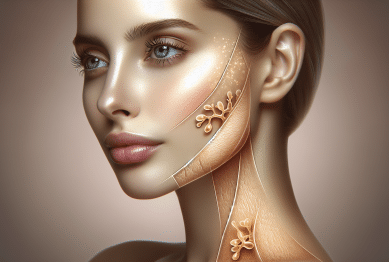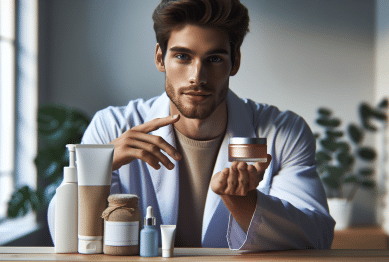Glowing skin draws attention and reflects overall well-being, sparking curiosity about how this phenomenon is achieved. Explore the science, daily habits, routine transformations, and holistic approaches that support healthy beauty and a natural, radiant complexion.
The Meaning of Radiance in Skin Health
When people mention glowing skin, they often visualize a smooth, evenly toned, and luminous complexion that signals vibrant health. This ‘glow’ is more than just a buzzword; it correlates with cellular energy, hydration, collagen levels, and external care habits. Researchers highlight that skin radiance reflects the inner workings of wellness routines, from nutrition to hydration and proper sleep cycles. Instead of being a fleeting effect, radiance is a prolonged indicator of robust skin function and optimal blood flow, both crucial for clarity and luminosity. Consistently observed in wellness campaigns and dermatology research, healthy skin showcases a blend of moisture, reduced inflammation, and a resilient barrier, making glow not just visually appealing but physiologically meaningful (Source: https://www.ncbi.nlm.nih.gov/pmc/articles/PMC4086122/).
This sought-after vibrancy is also linked to how light reflects off the outer skin layer, affected by hydration levels and the health of the epidermal cells. When the skin’s outermost layer is plump and well-nourished, it scatters light smoothly, resulting in that subtle, natural shine many chase in their routines. Dermatologists emphasize the importance of minimizing dullness by supporting the skin’s renewal process. Regular, gentle exfoliation and replenishing moisture can both enhance brightness and texture over time. Notably, environmental toxins and stressors like pollution, harsh products, and dehydration dull the skin’s appearance, reinforcing the need for holistic approaches that address both external and internal factors (Source: https://www.aad.org/public/everyday-care/skin-care-secrets/routine/healthy-skin).
Emotional health is also entwined with how the skin looks and feels. Chronic stress or sleep deprivation can contribute to lackluster tone or breakouts, while joyful moments may stimulate the body’s circulation and hormonal balance, amplifying that natural radiance. A robust skin barrier sequesters moisture while defending against irritants – two key components needed for a resilient, glowing complexion. Medical guidance often advocates for consistent, balanced routines that blend scientific understanding with gentle care practices to maintain lasting results. Readers interested in healthy beauty might find these convergence points useful for long-term choices, whether they’re just beginning or refining their routine habits (Source: https://www.ncbi.nlm.nih.gov/pmc/articles/PMC5807549/).
Nutrition Habits That Influence Skin Appearance
The phrase ‘you are what you eat’ rings true when discussing nutrition’s effect on the skin. Whole foods such as colorful fruits, leafy greens, and omega-rich fish foster cellular regeneration and reduce inflammation, supporting long-term glow from within. Vitamins—including vitamin C, E, and A—play strong roles by acting as antioxidants, shielding the skin from oxidative stress, and helping collagen synthesis (Source: https://www.hsph.harvard.edu/nutritionsource/vitamins/vitamin-c/). Many nutritionists advocate for the inclusion of zinc and selenium, minerals shown to aid in combating redness, acne, and general skin irritation, to further nourish the body’s largest organ.
Hydration is equally crucial. Drinking enough water throughout the day helps maintain skin elasticity and prevents flakiness or dullness that can arise from dehydration. Skin cells, like every cell in the body, require water to function optimally. In addition to fluids, foods with high water content such as cucumbers, melons, and tomatoes can contribute to daily intake and aid in flushing out toxins through the lymphatic system (Source: https://www.cdc.gov/nutrition/data-statistics/know-your-limit-for-added-sugars.html).
Conversely, diets high in processed foods, sugars, or trans fats have been associated with increased breakouts, redness, and loss of luminosity. Research by leading dermatological associations notes the importance of limiting excessive salt and refined carbohydrates, which may trigger puffiness and uneven skin tone. Striving for a balanced diet—rich in fiber, antioxidants, healthy fats, and lean protein—gives the body what it needs to sustain a naturally radiant complexion. These foundational habits make long-term beauty attainable and support internal systems that impact how skin appears at every age (Source: https://www.ncbi.nlm.nih.gov/pmc/articles/PMC4387693/).
Skincare Routines That Support Natural Glow
Consistency is key in skincare routines designed for radiance. Experts often advocate for three main steps: gentle cleansing, strategic moisturizing, and daily sun protection. Cleansing removes impurities without stripping vital oils; moisturizers reinforce the skin barrier with hydration and nutrients. The addition of targeted serums—such as those containing vitamin C or hyaluronic acid—addresses concerns like uneven tone or fine lines, leading to brighter and plumper-looking skin (Source: https://www.aad.org/public/everyday-care/skin-care-basics/care/skin-care-routine).
Daily use of a broad-spectrum sunscreen is widely cited as the most critical element for long-term skin health. Exposure to ultraviolet rays accelerates signs of aging, increases pigmentation, and erodes the skin’s protective barrier. Dermatological guidelines recommend SPF of at least 30, urging application even on cloudy days or indoors near windows. For those seeking radiant complexions, sunscreen is the invisible shield that preserves consistency and tone (Source: https://www.fda.gov/consumers/consumer-updates/sunscreen-how-help-protect-your-skin-sun).
Exfoliation, when approached thoughtfully, transforms texture and promotes light reflection. Alpha-hydroxy acids (AHAs), beta-hydroxy acids (BHAs), or enzyme-based options dissolve dead cells and reveal fresher layers with minimal irritation when used correctly. Yet, over-exfoliating can weaken the skin’s foundation and cause inflammation. Many see best results by integrating gentle exfoliation one to three times a week, paired with soothing, hydrating products that reinforce the skin’s natural defenses, contributing to the ongoing quest for a glowing complexion.
Lifestyle Factors and Their Effects on Skin
Lifestyle habits shape the skin’s surface and underlying structure. Chronic stress, for example, increases cortisol, which impairs collagen production and can lead to breakouts or fatigued skin. Mindfulness, meditation, and regular sleep cycles provide a hormonal balance that supports cellular repair and resets circadian rhythms. Studies show that quality rest supports microcirculation and enhances oxygen flow to the skin, fostering the conditions for a naturally luminous appearance (Source: https://www.sleepfoundation.org/physical-health/skin-health).
Physical activity’s role should not be underestimated. Moderate, regular exercise improves circulation, boosts nutrient delivery to skin cells, and supports detoxification. Sweating gently unclogs pores, while elevated endorphin levels combat the effects of stress. Alternatively, sedentary lifestyles or prolonged exposure to screens may increase oxidative stress that sabotages brightness and suppleness (Source: https://www.ncbi.nlm.nih.gov/pmc/articles/PMC6019055/).
Environmental exposures, like pollution or indoor heating, can sap moisture and create free radicals that dull the skin. Using antioxidant-rich serums or choosing hypoallergenic environments—such as well-ventilated spaces—ameliorates these effects. An overall mindful approach, where frustration and fatigue are balanced with restorative practices and intentional self-care, fosters a cycle where lifestyle and glowing skin reinforce each other on a daily basis.
Mind-Body Connection and Holistic Beauty
The mind-body link is powerful for both wellness and beauty pursuits. Studies tie meditation, gratitude practices, and emotional resilience to visibly improved skin. Positive self-perception can lower anxiety’s negative consequences, including redness, inflammation, or dullness. Thus, holistic strategies incorporate not just topical treatments, but self-affirming thought patterns and conscious stress management (Source: https://www.ncbi.nlm.nih.gov/pmc/articles/PMC4711207/).
Massage, facial yoga, and mindful breathing exercises stimulate lymphatic flow and support facial muscle tone. These practices reduce puffiness, soften expression lines, and can temporarily boost radiance without invasive treatments. Over time, integrating body awareness—through movement, breathing, or regular relaxation—creates a feedback loop that enhances how the skin looks and feels from the inside out.
Finally, receiving social support and nurturing joyful relationships have measurable effects on skin appearance. Laughter and shared happiness trigger neurotransmitter changes that indirectly aid in the skin’s barrier repair and resilience. Drawing from modern aesthetics and ancient traditions alike, embracing holistic beauty means understanding that glow is a reflection of the whole self, not just surface care alone.
References
1. Schagen, S. K., et al. (2012). Skin anti-aging strategies. Retrieved from https://www.ncbi.nlm.nih.gov/pmc/articles/PMC3583892/
2. American Academy of Dermatology Association. (n.d.). Skin care secrets for healthy skin. Retrieved from https://www.aad.org/public/everyday-care/skin-care-secrets/routine/healthy-skin
3. Harvard T.H. Chan School of Public Health. (n.d.). Vitamin C and Skin Health. Retrieved from https://www.hsph.harvard.edu/nutritionsource/vitamins/vitamin-c/
4. Centers for Disease Control and Prevention. (2022). Nutrition Data and Statistics. Retrieved from https://www.cdc.gov/nutrition/data-statistics/know-your-limit-for-added-sugars.html
5. Sleep Foundation. (n.d.). How sleep affects skin health. Retrieved from https://www.sleepfoundation.org/physical-health/skin-health
6. Sharma, A., & Adame, C. (2015). The skin and the mind. Retrieved from https://www.ncbi.nlm.nih.gov/pmc/articles/PMC4711207/









